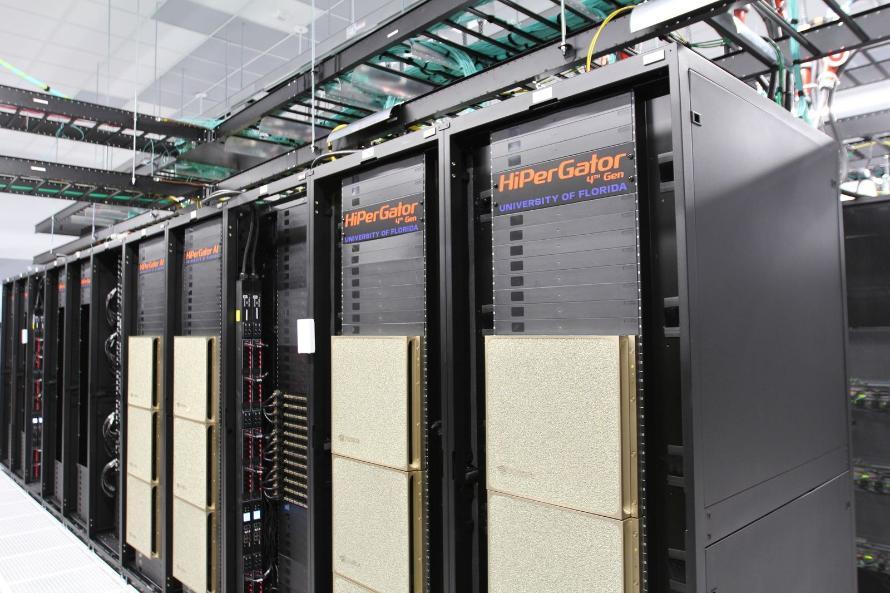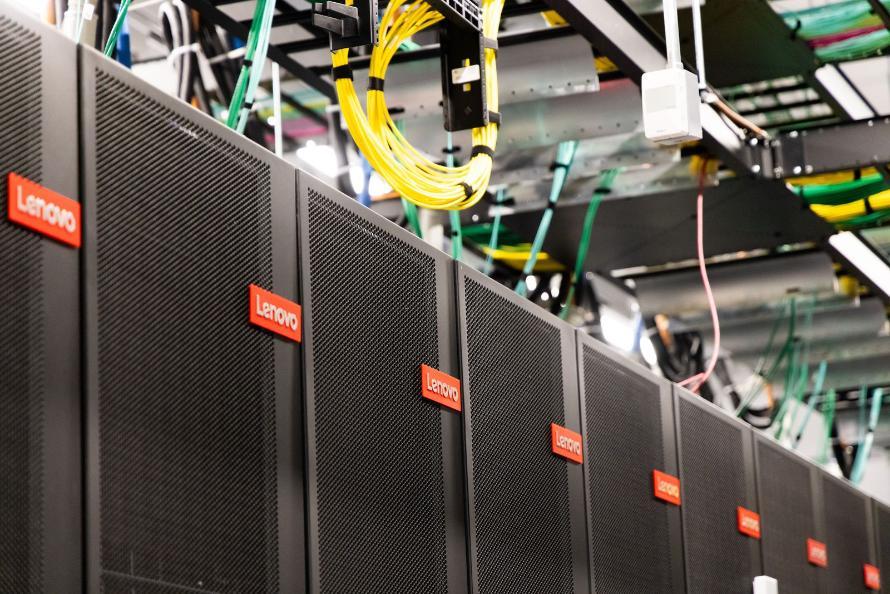The University of Florida supercomputer is a cluster that includes the latest generation of processors and offers nodes for memory-intensive computation. HiPerGator’s high-performance storage systems can be accessed from diverse interfaces, including Globus, UFApps for Research, and other tools.
UFIT Research Computing maintains the cluster and its many parts, allowing researchers to focus on their research instead of hardware and software maintenance. UFIT Research Computing supports supports a significant number of widely-used applications. Our staff is happy to evaluate and explore additional applications for UF’s research needs.
OVERVIEW
HiPerGator can be used by UF faculty and by faculty at colleges and universities in Florida for teaching and research using these options and procedures:
- For teaching a class, allocations are free and they last one semester. See classroom support for detailed instructions.
- For research, allocations can be purchased for periods ranging from three months to several years. The rates are listed on our price sheets
- A three month trial allocation at no cost may be requested for developing a course in advance of teaching the course and to explore the use of HPC for research. File a trial allocation request After the trial ends, please work with UFIT Research Computing staff to find the best way forward for continuing use of HiPerGator.
- To learn about HiPerGator capabilities, colleges and departments can request a free 3-month trial allocation shared between all faculty in the unit to get easy access for learning about HPC and preparing to include HPC in their courses at no cost to individual faculty.
Note that the HiPerGator operation and infrastructure has been operating successfully on this model since 2013 with significant investment from the provost, the VP for research, and the CIO.
HiPerGator Configuration
| Phase | Year | Cores |
RAM/core |
|---|---|---|---|
| HiPerGator AI | June 2025 |
63 NVIDIA DGX B200 |
18GB |
| HiPerGator 4.0 | June 2025 |
19,200 AMD EPYC 9655P Turin |
8GB |
| HiPerGator 3.0 | Jan 2021 | 30,720 AMD EPYC 7702 Rome 2.0 GHz Cores |
8GB |
| HiPerGator 3.0 | May 2021 | 9,600 AMD EPYC 75F3 Milan 3.0 GHz Cores |
8GB |
HiPerGator AI

- In 2025, the original HiPerGator AI NVIDIA DGX SuperPOD consisting of 140 NVIDIA DGX A100 nodes was replaced with a new SuperPOD of 63 NVIDIA DGX B200 nodes, each with 8 Blackwell B200 GPU's with 180 GB RAM in nodes with two Intel Xeon Platinum 8570 56-core processors and 2 TB of RAM.
- The Infiniband fabric was upgraded to NDR 400.
- The Blue storage system was replaced with 11 PB of All-Flash Storage from DDN.
- There are now several edge servers integrated into HiPerGator to provide web services, database services, and Open On-Demand portal access.
HiPerGator 4.0

In 2025, 30,000 Intel CPU cores and 640 NVIDIA 2080ti GPUs were retired. They were replace with 19,200 CPU cores in AMD EPYC 9655P 96-core CPU processors in nodes with 786 GB RAM. The GPUs were replaced with 600 NVIDIA L4 GPUs with 24 GB RAM.
HiPerGator 3.0
HiPerGator 3.0 construction was completed mid-2021. A new Blue storage system replaced /ufrc as well, and users are running their jobs on the new cluster in conjunction with the resources that HiPerGator 2.0 still provides.
- Total of 70,320 cores
- HiPerGator 3.0 has:
- 608 NVIDIA RTX 2080TI and RTX 6000 GPU’s
- 4 Petabytes (PB) of Blue fast storage
